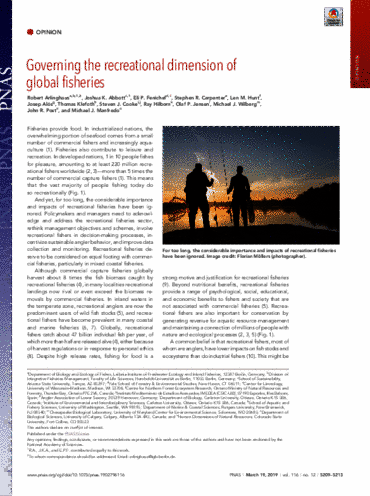Fisheries provide food. In industrialized nations, the overwhelming portion of seafood comes from a small number of commercial fishers and increasingly aquaculture (1). Fisheries also contribute to leisure and recreation. In developed nations, 1 in 10 people fishes for pleasure, amounting to at least 220 million recreational fishers worldwide (2, 3)—more than 5 times the number of commercial capture fishers (1). This means that the vast majority of people fishing today do so recreationally (Fig. 1). And yet, for too long, the considerable importance and impacts of recreational fisheries have been ignored. Policymakers and managers need to acknowledge and address the recreational fisheries sector, rethink management objectives and schemes, involve recreational fishers in decision-making processes, incentivize sustainable angler behavior, and improve data collection and monitoring. Recreational fisheries deserve to be considered on equal footing with commercial fisheries, particularly in mixed coastal fisheries.
Opinion: Governing the recreational dimension of global fisheries
Project Boddenpike , Peer-reviewed

Arlinghaus, R., Abbott, J. K., Fenichel, E. P., Carpenter, S. R., Hunt, L. M., Alós, J., Klefoth, T., Cooke, S. J., Hilborn, R., Jensen, O. P., Wilberg, M. J., Post, J. R., Manfredo, M. J. (2019). Opinion: Governing the recreational dimension of global fisheries. Proceedings of the National Academy of Sciences of the United States of America, 116, 5209-5213
Published
: 2019
Appeared in
: Proceedings of the National Academy of Sciences of the United States of America, 116, 5209-5213
